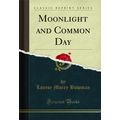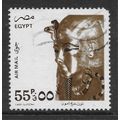Etosha National Park, Namibia - lion, zebra, lioness, kudu - postcard c.1970s
- Condition : Used
- Dispatch : 2 Days
- Brand : None
- ID# : 182547554
- Quantity : 1 item
- Views : 209
- Location : United Kingdom

- Seller : justthebook (+1699)
- Barcode : None
- Start : Wed 12 Jun 2019 05:11:09 (EDT)
- Close : Run Until Sold
- Remain : Run Until Sold
Checks/Cheques
 for 1 item(s) edit
for 1 item(s) edit
Shipping Calculator
More Listings from This Seller view all
Seller's Description
- Postcard
- Picture / Image: Etosha [National Park, Namibia] - male lion drinking / zebra at Twin Palms waterhole / lioness with cubs / kudu at Klein Okevi waterhole
- Publisher: Wayron Postcard Dist, Sunard Park, South Africa
- Postally used: no - but has long message
- Stamp: n/a
- Postmark(s): n/a
- Sent to: n/a
- Notes / condition:
Please ask if you need any other information and I will do the best I can to answer.
------------------------------------------------
Postage and packing charge should be showing for your location (contact if not sure).
UK - PayPal, Cheque (from UK bank) or postal order
I will give a full refund if you are not fully satisfied with the postcard.
----------------------------------------------
Etosha National Park is a national park in northwestern Namibia. The park was proclaimed a game reserve on March 22, 1907 in Ordinance 88 by the Governor of German South West Africa, Dr. Friedrich von Lindequist. It was designated as Wildschutzgebiet Nr. 2 which means Game Reserve Number 2, in numerical order after West Caprivi (Game Reserve No. 1) and preceding Namib Game Reserve (No. 3). In 1958, Game Reserve No. 2 became Etosha Game Park and was elevated to status of National Park in 1967 by an act of parliament of the Republic of South Africawhich administered South-West Africa during that time.[1]
Etosha National Park spans an area of 22,270 square kilometres (8,600 sq mi) and gets its name from the large Etosha pan which is almost entirely within the park. The Etosha pan (4,760 square kilometres (1,840 sq mi)) covers 23% of the area of the total area of the Etosha National Park.[2] The park is home to hundreds of species of mammals, birds and reptiles, including several threatened and endangered species such as the black rhinoceros.
The park is located in the Kunene region and shares boundaries with the regions of Oshana, Oshikoto and Otjozondjupa.
Areas north of the Etosha pan were inhabited by Ovambo people, while various Otjiherero-speaking groups lived immediately outside the current park boundaries. The areas inside the park close to the Etosha pan had Khoisan-speaking Hai//om people.
When the Etosha pan was first discovered, the Hai//om people recognized the Ovambo chief at Ondonga but the Hereros did not.[3] The Hai||om were forcibly removed from the park in the 1954, ending their hunter-gatherer lifestyle to become landless farm laborers.[4] The Hai||om have had a recognized Traditional Authority since 2004 which helps facilitate communications between the community and the government. The government of Namibia acknowledges the park to be the home of Hai||om people and has plans to resettle displaced families on farms adjacent to the national park. Since 2007 the Government has acquired six farms directly south of the Gobaub depression in Etosha National Park. A number of families have settled on these farms under the leadership of Chief David Khamuxab, Paramount Chief of the Hai||om.
The present-day Etosha National Park has had many major and minor boundary changes since its inception in 1907. The major boundary changes since 1907 were because of Ordinance 18 of 1958 and Ordinance 21 of 1970.[1]
When the Etosha area was proclaimed as Game Reserve 2 by Ordinance 88 of 1907, the park stretched from the mouths of the Kunene river and Hoarusib river on the Skeleton Coast to Namutoni in the east. The original area was estimated to be 99,526 square kilometres (38,427 sq mi), an estimate that has been corrected to about 80,000 square kilometres (31,000 sq mi).[1]Ordinance 18 of 1958 changed the western park boundaries to exclude the area between the Kunene river and the Hoarusib river and instead include the area between Hoanib river and Uchab river, thus reducing the park's area to 55,000 square kilometres (21,000 sq mi). The Odendaal Commission's (1963) decision resulted in the demarcation of the present-day park boundary in 1970.
The salt pans are the most noticeable geological features in the Etosha national park. The main depression covers an area of about 5,000 square kilometres (1,900 sq mi), and is roughly 130 km (81 mi) long and as wide as 50 km (31 mi) places. The hypersaline conditions of the pan limit the species that can permanently inhabit the pan itself; occurrences of extremophile micro-organisms are present, which species can tolerate the hypersaline conditions.[6] The salt pan is usually dry, but fills with water briefly in the summer, when it attracts pelicans and flamingos in particular.
In the dry season, winds blowing across the salt pan pick up saline dust and carry it across the country and out over the southern Atlantic. This salt enrichment provides minerals to the soil downwind of the pan on which some wildlife depends, though the salinity also creates challenges to farming.
The Etosha Pan was one of several sites throughout southern Africa in the Southern African Regional Science Initiative (SAFARI 2000). Using satellites, aircraft, and ground-based data from sites such as Etosha, partners in this program collected a wide variety of data on aerosols, land cover, and other characteristics of the land and atmosphere to study and understand the interactions between people and the natural environment.
The dolomite hills on the southern border of the park near the Andersson entrance gate are called Ondundozonananandana, meaning place where young boy herding cattle went to never return, probably implying a high density of predators like leopards in the hills, giving the mountains its English name of Leopard Hills.[1] The Halali area is also home to dolomite hills within the park, with one hill inside the camp and the nearby Twee Koppies. Western Etosha is also dominated by dolomite hills which is the only place in the park that has mountain zebra.
Listing Information
| Listing Type | Gallery Listing |
| Listing ID# | 182547554 |
| Start Time | Wed 12 Jun 2019 05:11:09 (EDT) |
| Close Time | Run Until Sold |
| Starting Bid | Fixed Price (no bidding) |
| Item Condition | Used |
| Bids | 0 |
| Views | 209 |
| Dispatch Time | 2 Days |
| Quantity | 1 |
| Location | United Kingdom |
| Auto Extend | No |





















